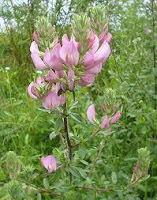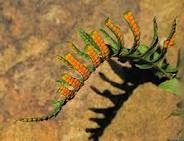Aconite has been used for pain relief and was in the British Pharmacopeias, but only that grown in Britain, however there is no scientific evidence to support its use as a cancer treatment, whether as a cure or for preventative purposes. Neither is there evidence for its other purported uses. Aconite is extremely poisonous as is datura or thornapple and aak. Aconitum napellus is an attractive flowering plant whose leaves, stems and roots were especially valued in medicine until the mid 1900s. However it has fallen into disuse because it is so poisonous.
 It has been used in traditional Asian medicine in
It has been used in traditional Asian medicine in It is a member of the buttercup of Ranunculaceae family and as such is a relative of the Lesser Celandine, marsh marigolds, black cohosh, wood anemones and goldenseal. It grew in South Wales when I was growing up and looked to me like a delphinium (larkspur). It seems to like to grow on rocky, craggy places and aconite comes from the Greek akonos which means stone while napellus refers to the root shape which was thought to resemble a small turnip.
It gets the name monkshood because the petals are thought to resemble a monk’s cowl.
 Aconite causes arrhythmia, heart failure and death and was Medea’s poison of choice in her potions, one of which was destined for Theseus, who did not drink it. The Greek myth says that aconite grew from the slobber of the three-headed dog, Cerberus who guarded the gate of Tartarus. Because of the association with this hell-hound it has been called Dog’s bane. Athena used its poison to turn Arachne into a spider for her impiety, and it was much feared by the ancient Romans. The Roman Emperor Claudius I was poisoned with it by his physician and the Emperor Trajan forbade its cultivation under pain of death. It was referred to as Hecate’s herb (Hecateis herba) in Mediaeval times and it was believed to have been an ingredient along with Belladonna of witches’ flying ointment.
Aconite causes arrhythmia, heart failure and death and was Medea’s poison of choice in her potions, one of which was destined for Theseus, who did not drink it. The Greek myth says that aconite grew from the slobber of the three-headed dog, Cerberus who guarded the gate of Tartarus. Because of the association with this hell-hound it has been called Dog’s bane. Athena used its poison to turn Arachne into a spider for her impiety, and it was much feared by the ancient Romans. The Roman Emperor Claudius I was poisoned with it by his physician and the Emperor Trajan forbade its cultivation under pain of death. It was referred to as Hecate’s herb (Hecateis herba) in Mediaeval times and it was believed to have been an ingredient along with Belladonna of witches’ flying ointment. Aconite can be absorbed through the skin, whether broken or not so should not be used externally or internally.
Aconite can be absorbed through the skin, whether broken or not so should not be used externally or internally. Pliny wrote that aconite could kill a mouse that was some distance away, and for this reason it was called mousebane by some. The name wolfsbane comes from the belief that it could turn people into werewolves or perhaps cure them of being wolf men. Its poison was also used to tip arrows to kill wolves.
John Gerard, the English herbalist writing in the 16th century wrote that it was “so forcible that the herb only thrown before the scorpion or any other venomous beast, causeth it to be without force or the strength to hurt” until the plant was removed.
In 1603, Ben Jonson the English playwright has this to say about aconite in his play “Sejanus, his fall”
“I have heard that Aconite
Being timely taken hath a healing might
Against the scorpion’s stroke.”
“A hoop of gold to bind thy brothers in,
That the united vessel of their blood,
Mingled with venom of suggestion-
As perforce, the age will pour it in-
Shall never leak, though it do work as strong
As aconitum or rash gunpowder.”
Much late in his poem Flowers, Thomas Hood (1799-1845) an English poet, mentions it in this way: -
Nor will I dreary rosemarye,
That always mourns the dead;
But I will woo the dainty rose,
With her cheeks of tender red.”
It is best not to touch this plant especially if you have broken skin, and don’t be tempted to make your own poison with it –it has been too well documented in literature as a poison (Brother Cadfael books, Harry Potter and others).




















































